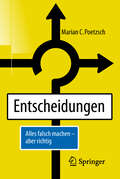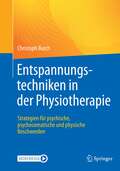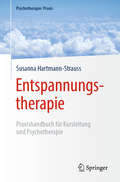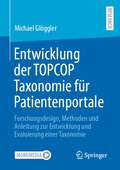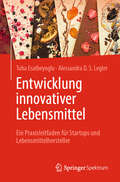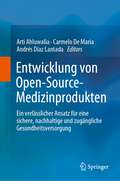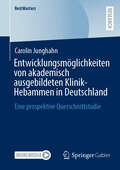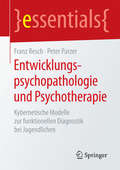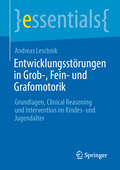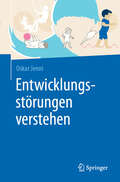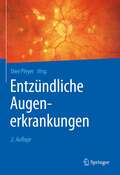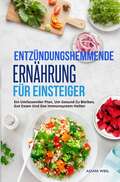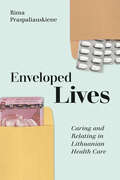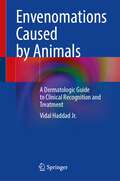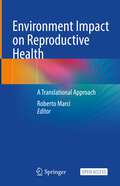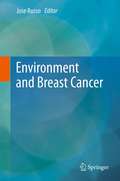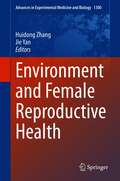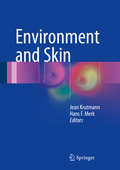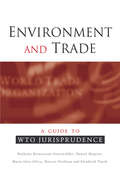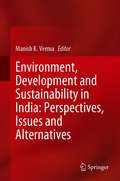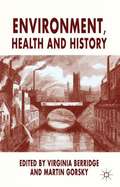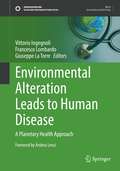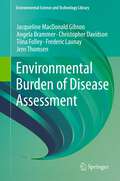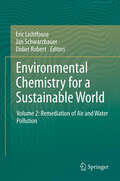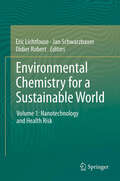- Table View
- List View
Entscheidungen: Alles Falsch Machen - Aber Richtig
by Marian C. PoetzschWas macht man bei einem Flugzeugabsturz, wie rettet man Leben und warum bestellst du immer Wiener Schnitzel? Wie melde ich mich richtig krank, wie schaffe ich es endlich dieses Regal aufzubauen und welchen Rasenmäher kaufe ich am besten? Du kannst dich nicht entscheiden? Du hast immer das Gefühl, etwas anderes wäre besser gewesen? Kein Wunder. Du machst auch alles falsch. Dann mach wenigstens das richtig. Ständig sind wir in unserem Alltag damit konfrontiert Entscheidungen zu treffen – mal große und mal kleine. Aber was beeinflusst uns dabei und was bewirken unsere zahlreichen bewussten oder unbewussten Entscheidungen? Was passiert, wenn wir zweifeln und uns nicht entscheiden? In diesem satirischen Anti-Ratgeber geht der Autor der Problematik der täglichen Entscheidungen auf den Grund. Beruhigend: es geht uns allen so. Immer schon. Zahlreiche Beispiele aus der Geschichte zeigen das. Und noch besser: hier gibt es einen praktischen Ratgeber für schlechte Entscheidungen. Der ultimative Anti-Ratgeber für Entscheidungen.
Entspannungstechniken in der Physiotherapie: Strategien für psychische, psychosomatische und physische Beschwerden
by Christoph BurchDieses Praxisbuch liefert Physiotherapeuten eine Vielzahl an evidenzbasierten Entspannungstechniken. Sie wollten schon immer wissen, wie Embodiment wirkt? Welche Entspannungstherapien können die Behandlung eines Tinnitus aurium unterstützen? Und welchen Stellenwert hat Schlaf in unserem täglichen Leben? Hier finden Sie die Antworten!Aus dem Inhalt:• Grundlagenwissen zu Stressreaktionen und Entspannungstherapie• Konkrete Entspannungsmethoden wie z. B. Progressive Relaxation, Biofeedback und Achtsamkeit• Anwendung bei spezifischen psychischen, psychosomatischen und physischen BeschwerdebildernPlus: Videos veranschaulichen die praktische Umsetzung optimal!Erweitern Sie Ihr Wissen und verhelfen Sie sich und Ihren Patienten zu einem besseren Behandlungsergebnis!
Entspannungstherapie: Praxishandbuch für Kursleitung und Psychotherapie (Psychotherapie: Praxis)
by Susanna Hartmann-StraussDieses Buch bietet eine praxisorientierte Hilfe zur Gestaltung von Entspannungskursen und Einzelsitzungen. Die beiden verbreitetsten Verfahren, Progressive Relaxation und Autogenes Training, werden so umfassend dargestellt, dass das Handbuch als praktischer Kursleitfaden dienen kann. Im Mittelpunkt steht jedoch nicht die Methode, sondern Aufbau, Ablauf und Gestaltung der Kurssituation sowie das nötige psychologische und entspannungsspezifische Wissen. Die Kenntnisse lassen sich auf andere Verfahren, wie bspw. Imagination oder Achtsamkeit, ebenso anwenden. Neben dem psychotherapeutischen Einsatz in Praxis und Klinik ist das Werk auch für die Anwendung in der Prävention geeignet. Es erläutert die Unterschiede in den verschiedenen Kontexten ebenso wie Strategien bei speziellen Zielgruppen und Themen (z. B. bei Schmerzpatienten und Schlafstörungen). Aus dem Inhalt: Zielgruppenorientierte Erklärungen – Übungsanleitungen und Vorgehensweisen – konkrete Umsetzung im Kurs – entspannungsspezifisches Wissen und psychologische Grundlagen – Motivationsaufbau und Transfer in den Alltag – Umgang mit Problemen und Störungen im Kursverlauf. Die Autorin: Susanna Hartmann-Strauss ist Diplompsychologin, Psychologische Psychotherapeutin, Systemische Therapeutin und Supervisorin. Sie arbeitet kassenzugelassen in eigener Praxis und bildet seit mehr als 15 Jahren Entspannungstrainer in präventiven und therapeutischen Kontexten aus.
Entwicklung der TOPCOP Taxonomie für Patientenportale: Forschungsdesign, Methoden und Anleitung zur Entwicklung und Evaluierung einer Taxonomie
by Michael GlögglerTaxonomien sind Modelle, um unübersichtliche Domänen zu analysieren, Komplexität zu reduzieren sowie Unterschiede und Ähnlichkeiten von Objekten zu erkennen. Ferner helfen sie, Wissen zu ordnen und so Wissen zu vergrößern. Da täglich neues Wissen entsteht, ist eine nutzungsorientierte Entwicklung von Taxonomien für die Wissenschaft und die Praxis von fundamentaler Bedeutung. Taxonomien sind unerlässlich für die Erforschung, Beschreibung und Strukturierung von Domänen. Trotz ihrer besonderen Bedeutung gibt es für viele Wissenschaften nur wenige Handlungsanleitungen zur Entwicklung von Taxonomien.In diesem Buch werden die Forschungsergebnisse der Dissertation mit dem Titel „Entwicklung einer Taxonomie für Patientenportale für Health Information Manager“ präsentiert. Aufgrund der detaillierten Darstellung der Entwicklungsschritte und der eingesetzten Methoden kann diese Dissertationsforschung als Anleitung zur Entwicklung von Taxonomien dienen. Dabei ist die Evaluierung für die Nützlichkeit einer Taxonomie maßgeblich. Mit dem „TED Taxonomy-Evaluation-Delphi Approach“ entwickelte der Autor eine neue Methode zur Evaluierung von Taxonomien, welche hier ausführlich beschrieben wird.
Entwicklung innovativer Lebensmittel: Ein Praxisleitfaden für Startups und Lebensmittelhersteller
by Tuba Esatbeyoglu Alessandra LeglerDieses Fachbuch zur Produktentwicklung von Lebensmitteln richtet sich an Personen, die neu in der Lebensmittelbranche sind wie etwa Gründerinnen und Gründer von Startups. Ziel ist es, praxisnahes Wissen mit theoretischem Hintergrundwissen zu verbinden und ein tiefes Verständnis der Produktentwicklung zu vermitteln. Ein besonderer Fokus liegt auf der Entwicklung innovativer Prototypen, die marktfähig werden können. Der beschriebene Modellprozess ist als Vorschlag zu verstehen – denn es gibt nicht den einen idealen Weg, sondern viele kreative Pfade. Die ersten vier Kapitel behandeln Grundlagen, wie z. B. die Frage danach, was Innovation ausmacht, die Bedingungen auf dem Lebensmittelmarkt, rechtliche Rahmenbedingungen für die Lebensmittelentwicklung und Lebensmittelsensorik. Kapitel 5 beschreibt den Modellprozess zur Herstellung eines innovativen, marktfähigen Lebensmittelprototypen. Die Kapitel 6–8 gliedern den hier vorgestellten Produktentwicklungsprozess in drei Phasen von der Idee bis zur Marktreife. Dabei stehen insbesondere Verbrauchertests im Fokus, um marktfähige Produkte zu gestalten, wie es für die Methode des Design Thinking typisch ist.
Entwicklung von Open-Source-Medizinprodukten: Ein verlässlicher Ansatz für eine sichere, nachhaltige und zugängliche Gesundheitsversorgung
by Andrés Díaz Lantada Arti Ahluwalia Carmelo De MariaDieses Buch befasst sich mit den Herausforderungen und Möglichkeiten von Open-Source- und kollaborativen Designansätzen und -strategien im biomedizinischen Bereich. Es bietet eine umfassende Reihe von bewährten Verfahren und Methoden, damit diese sicheren, innovativen und zertifizierbaren biomedizinischen Geräte die Patienten erreichen und erfolgreiche Lösungen für Probleme im Gesundheitswesen bieten. Die Kapitel sind so gegliedert, dass sie den gesamten Lebenszyklus von Open-Source-Medizintechnologien verfolgen. Die bereitgestellten Informationen sind äußerst praxisorientiert, da sie sich auf reale Studienfälle stützen, bei denen sich die Zusammenarbeit zwischen medizinischen Fachkräften, Ingenieuren und Technikern, Patienten und Patientenverbänden, politischen Entscheidungsträgern, Regulierungsbehörden und Bürgern als vorteilhaft erwiesen hat. Das Buch wird auch durch eine Online-Infrastruktur, UBORA, unterstützt, über die Open-Source-Medizinprodukte gemeinsam entwickelt und geteilt werden können, um die Medizintechnik zu demokratisieren und eine zugängliche biomedizintechnische Ausbildung zu fördern.
Entwicklungsmöglichkeiten von akademisch ausgebildeten Klinik-Hebammen in Deutschland: Eine prospektive Querschnittstudie (BestMasters)
by Carolin JunghahnIn Deutschland fehlt es bislang an Konzepten und Lösungen, wie Hebammen mit Hochschulabschluss entsprechend ihrer Kompetenzen im Arbeitsfeld Krankenhaus eingesetzt und weiterentwickelt werden können. Mit dem Ziel, erste Zahlen in dem wenig erforschten Feld zu generieren und Implikationen für die weitere Forschung und die Praxis abzuleiten, untersucht die vorliegende prospektive Querschnittstudie die Sicht junger Bachelorhebammen in Bezug auf deren Einschätzung gegenwärtiger Entwicklungsmöglichkeiten, Zukunftsvisionen und als adäquat angesehene Voraussetzungen für die berufliche Weiterentwicklung. Die Ergebnisse zeigen eine hohe Motivation und Bereitschaft zur beruflichen Weiterentwicklung mit Übernahme verantwortungsvollerer Aufgaben und dem Voranbringen der geburtshilflichen Versorgung. Die Notwendigkeit einer breit angelegten Diskussion zur Einführung von Advanced Practice-Rollen im Hebammenwesen in Deutschland kann abgeleitet werden.
Entwicklungspsychopathologie und Psychotherapie: Kybernetische Modelle zur funktionellen Diagnostik bei Jugendlichen (essentials)
by Franz Resch Peter ParzerDas Essential vermittelt eine neue Betrachtungsweise in Bezug auf die Psychotherapie von Jugendlichen. Diese sollte nicht nur nosologisch ausgerichtet sein, sondern in der Indikation zu therapeutischen Maßnahmen darüber hinaus auch eine strukturelle undfunktionelle Analyse der Symptomatik berücksichtigen, um denEntwicklungsaufgaben, Lebensthemen und dem familiären beziehungsweise außerfamiliären Kontext - also den aktuellen Lebensbedingungen - der Jugendlichen Rechnung zu tragen. Kybernetische Modelle zum zielgerichteten Verhalten erlauben funktionelle Beschreibungen von Symptomverflechtungen, die sich einer direkten therapeutischen Beeinflussung entziehen und nur durch das Auffinden innerer Ziele, in deren Dienst sie stehen, über Verhaltensalternativen verändert werden können.
Entwicklungsstörungen in Grob-, Fein- und Grafomotorik: Grundlagen, Clinical Reasoning und Intervention im Kindes- und Jugendalter (essentials)
by Andreas LeschnikIn diesem essential werden die umschriebenen Entwicklungsstörungen der Grob-, Fein-, Grafo- und Schreibmotorik in Ihren Grundlagen und Entwicklungsstufen kurz erfasst. Im weiteren Verlauf bietet es die Möglichkeit die o.g. Entwicklungsstörungen mit dem hypothetisch-deduktiven Clinical Reasoning zu erfassen und Therapiemöglichkeiten aufzuzeigen.
Entwicklungsstörungen verstehen
by Oskar JenniDas kompakte Buch fasst das Praxiswissen über Entwicklungsstörungen im Kindes- und Jugendalter zusammen. Oskar Jenni gibt Einblicke in das Spektrum von Störungen der kindlichen Entwicklung, reflektiert über deren Zunahme, listet die verschiedenen Ursachen auf und stellt das diagnostische Vorgehen vor. Ausgewählte Entwicklungsstörungen werden prägnant und verständlich vorgestellt und mit anschaulichen Grafiken illustriert. Die Darstellung der Risiko- und Schutzfaktoren für die Entwicklung des Kindes sowie Überlegungen zur Förderung und Beratung runden dieses Praxisbuch ab. Das Werk eignet sich für die Kinder- und Jugendmedizin und für die Psychiatrie, Psychologie, Heilpädagogik, Logopädie, Ergotherapie, Psychomotorik, Physiotherapie und verwandte Disziplinen.
Entzündliche Augenerkrankungen
by Uwe PleyerDas Buch vermittelt, mit Herrn Professor Pleyer an der Spitze, umfangreiches Expertenwissen über Pathophysiologie, Diagnostik, Differentialdiagnostik und Therapie entzündlicher Augenerkrankungen. Es ist auf die praktischen Bedürfnisse der in Praxis oder Klinik tätigen Ophthalmologen ausgerichtet und behandelt eine Vielzahl an entzündlichen Augenerkrankungen, die infektiös oder nichtinfektiös, akut oder chronisch sein können. Kompakt und übersichtlich werden pathophysiologische Grundlagen, Leitfäden zur Diagnostik und aktuelle Therapieempfehlungen erläutert. Zahlreiche Flussdiagramme, Praxistipps und farbige Abbildungen machen dieses Buch zu einem diagnostischen und therapeutischen Wegweiser durch das Spektrum der entzündlichen Augenerkrankungen. Für alle Ophthalmologen, aber auch interessierte Internisten, Pädiater und Dermatologen.
Entzündungshemmende Ernährung Für Einsteiger: Ein Rundumplan Zur Stärkung Des Immunsystems Durch Gesunde Ernährung
by Adam WeilEntzündungen sind die Ursache für verschiedene Krankheiten, und wenn sie nicht richtig behandelt werden, können sie zum Tod führen. Experten und Ärzte empfehlen verschiedene Behandlungsmethoden gegen Entzündungen. Eine entzündungshemmende Ernährung ist dabei die beste und wirksamste. In diesem Buch erfahren Sie alles Wissenswerte über Entzündungen, die Arten von Krankheiten, die sie auslösen können, sowie deren Ursachen und Behandlung. Sie erfahren, welches die besten entzündungshemmenden Lebensmittel sind und wie Sie diese am besten in Ihren eigenen entzündungshemmenden Speiseplan einbauen. Leiden Sie unter einer Entzündung, die von Tag zu Tag schlimmer wird? Suchen Sie nach einem einfachen, ganz natürlichen Weg, um Ihre Gesundheit zu stärken, abzunehmen und Entzündungen zu lindern? Dann sollten Sie weiterlesen! Entzündungen sind die Ursache zahlreicher Krankheiten, und wenn sie nicht richtig behandelt werden, können sie zum Tod führen. Experten und Ärzte empfehlen verschiedene Behandlungsmethoden gegen Entzündungen, wobei eine entzündungshemmende Ernährung die beste und wirksamste ist. In diesem Buch erfahren Sie alles Wissenswerte über Entzündungen, die Arten von Krankheiten, die sie auslösen können, sowie deren Ursachen und Behandlung. Sie erfahren, welches die besten entzündungshemmenden Lebensmittel sind und wie Sie diese bei der Zusammenstellung Ihres eigenen entzündungshemmenden Speiseplans am besten verwenden. Unabhängig davon, wer Sie sind und was Sie erreichen wollen, kann jeder lernen, wie man Entzündungen bekämpft. Dieses Buch wird Ihnen helfen, alles zu verstehen, was Sie über eine entzündungshemmende Ernährung wissen müssen, insbesondere über die Vorteile und Herausforderungen dieser neuen Ernährungsweise. Darüber hinaus gebe ich Ihnen eine Schritt-für-Schritt-Anleitung, wie Sie die entzündungshemmende Ernährung in Ihr Leben integrieren können, mit einigen praktisch
Enveloped Lives: Caring and Relating in Lithuanian Health Care
by Rima PraspaliauskieneHanding envelopes containing money or gifts to doctors in public health care is often seen as a remnant of socialism that continues as an integral part of the Lithuanian health care system. Rima Praspaliauskiene uses the envelope to explore complex doctor-patient interactions that go beyond notions of the gift or the bribe. She reshapes our definition of corruption and encourages seeing these practices as emerging forms of care that impede the neoliberal health care reforms effected in the post-Soviet era. Enveloped Lives extends the analytical categories of gift, care, money, and transparency, shifting attention away from material transactions by prioritizing relations and practices that transcend economic rationality. At a time when health care reforms and the costs of care are being widely debated, this book is a contribution to the larger discussion about the ethics and future of health care around the world.
Envenomations Caused by Animals: A Dermatologic Guide to Clinical Recognition and Treatment
by Vidal Haddad Jr.About 90% of the injuries caused by venomous and poisonous animals are manifested by cutaneous signs, due to the inflammatory and necrotic characteristics of various toxins. Even when there are no initial changes in the skin, these can appear in later stages. Therefore, it is necessary for health professionals to be able to recognize and treat these types of injuries. This work provides detailed information on the identification of venomous and poisonous animals and the symptoms caused by their toxins. It includes extensive photographic documentation and discussion on the diagnosis and treatment of dermatitis, which can range from small superficial inflammations to deep necrosis with great tissue destruction. The latter can be prevented by early diagnosis. Chapters will discuss the identification of skin lesions caused by envenomation, and the definitions and implications of skin aggression. The content is presented in detail according to injuries caused by beetles (Coleoptera), Millepods, Hemiptera (Pentatomidae), cockroaches (Blattaria), centipedes (Chilopoda), bees and wasps, giant water bugs (Belostomatidae), ticks, ants, caterpillars and moths, spiders, scorpions, snakes, jellyfish and Portuguese man-of-war, venomous fish and bats. This original book fills a gap in the medical literature and will be a valuable resource for dermatologists, infectologists and general practitioners. Additionally, it may also be a useful tool for residents, professionals from other medical specialties and even from other areas, such as Biology and Veterinary Medicine. The author has more than 150 publications in indexed journals and forty years of clinical experience on the subject.
Environment Impact on Reproductive Health: A Translational Approach
by Roberto MarciThis open access book focuses on of the impact of endocrine disrupting chemicals (EDCs) on human reproduction. It comprehensively discusses the three most important topics in the field: the basic biology of EDCs; the effects of EDCs on human reproduction and human reproductive systems; and potential interventions and practical advice for dealing with the problems caused by EDCs.Presenting a translational approach to endocrine disrupting chemicals research, spanning both basic biology and clinical applications, the book provides a critical link between laboratory investigations and clinical practice. Written by international experts in the field, it is a valuable reference resource for gynaecologists, obstetricians, endocrinologists and experts in reproductive medicine, and a useful tool for anyone interested in the impact of the environment on human reproduction.
Environment and Breast Cancer
by Jose RussoBreast cancer is a complex disease caused by multiple environmental and lifestyle factors interacting with genetic susceptibility across the life span. Therefore, environmental factors are of intense interest to both researchers and community members, including women with breast cancer. There is not adequate literature that addresses this issue comprehensively from epidemiological, experimental, and translational research perspective. This book is aiming to fill this gap by gathering chapters from the most recognized experts in the field of breast biology and cancer with special interests in environmental issues.
Environment and Female Reproductive Health (Advances in Experimental Medicine and Biology #1300)
by Huidong Zhang Jie YanThis book will focus on the harmful effect of environmental toxins on female reproductive health. Reproduction is the basis of the continuation of human beings, and environment is the basis of human survival. However, environmental pollution has become a potential risk factor for human reproductive health, which not only leads to many chronic diseases, but also causes certain harm to reproductive health. Compared to male reproduction, female reproductive process is more complex, the reproductive system is more fragile, and is more vulnerable to be damaged. The aim of this book is to review the research progress, to address the challenges, and to stimulate the development in the direction of environment and female reproductive health.
Environment and Skin
by Jean Krutmann Hans F. MerkThis book is a rich source of information on skin disorders due to toxicants in the environment. State of the art knowledge is summarized concerning the molecular basis of skin damage caused by well-appreciated environmental noxae. The book also provides a uniquely comprehensive overview of the detrimental dermatological effects of exposure to air pollution and global climate change. A special focus is contact allergy, which, beyond representing a major problem in dermatotoxicology, serves as a prime example for the development of toxicological approaches to risk assessment. A further chapter is devoted to contact urticaria, a condition that can progress to life-threatening anaphylactic reactions. The novel information offered in this book will enable the reader to go beyond the traditional thinking of dermatotoxicology and achieve a modern appreciation of the highly complex interplay between skin and environment.
Environment and Trade: A Guide to WTO Jurisprudence
by Nathalie Bernasconi-Osterwalder Daniel Magraw Maria Julia Oliva Elisabeth Tuerk Marcos OrellanaInternational trade rules have significant impacts on environmental law and policy, at the domestic, regional and global levels. At the World Trade Organization (WTO), dispute settlement tribunals are increasingly called to decide on environment- and health-related questions. Can governments treat products differently based on environmental considerations? Can they block the import of highly carcinogenic asbestos-containing products or genetically modified crops? Does the WTO allow governments to protect dolphins or endangered sea turtles through the use of import restrictions on certain products? How can civil society participate in WTO dispute settlement? This Guide, authored by five world leaders on international environmental and trade law at the Center for International Environmental Law (CIEL), is an accessible, comprehensive, one-of-a-kind compendium of environment and trade jurisprudence under the WTO. Providing an overview for both experts and non-experts of the major themes relevant to environment and trade, it also analyses how WTO tribunals have approached these themes in concrete disputes and provides selected excerpts of the most significant cases.
Environment, Development and Sustainability in India: Perspectives, Issues and Alternatives
by Manish K. VermaThis book provides a comprehensive account of asymmetric linkage in the trilogy of environment, development and sustainability and its impact on society. It examines varied perspectives and issues of development related to environmental destruction and sustainability challenges. By examining the recent trends of development and recording the dilemmas which are creating ecological imbalances, it explores some alternative ways of development to achieve sustainability. Divided into three parts, it has a broad canvass. The first section examines critically the ‘perspectives’ on ecology, practice and ethics, rural development and man–forest interaction in the metropolis. ‘Issues’ of dams, river, agricultural distress, environmental migration, eco-tourism, ecological conservation and land acquisition are assessed in part second. ‘Alternative’ means of development is explored in part third by incorporating chapters on the constructed wetland, biofuels, subsistence economy, water and traditional knowledge practice. This interdisciplinary book is of immense significance to academicians, researchers, postgraduate and graduate-level students of social sciences and environmental studies; policymakers, development practitioners and NGOs working in the area of environment and development.
Environment, Health and History
by Virginia Berridge Martin GorskyThe environment is currently a matter of international public and academic concern, but is often considered separately from health issues. This book brings together work from environmental and health historians to conceptualise the connection between environment and health at different times and in different geographical locations.
Environmental Alteration Leads to Human Disease: A Planetary Health Approach (Sustainable Development Goals Series)
by Giuseppe La Torre Vittorio Ingegnoli Francesco LombardoThis book aims to explore the impact of human alterations of Earth’s ecological systems on human health. Human activities are producing fundamental biophysical changes faster than ever before in the history of our species, which are accompanied by dangerous health effects. Drawing on advanced ecological principles, the book demonstrates the importance of using systemic medicine to study the effects of ecological alterations on human health. Planetary Health is an interdisciplinary field, but first of all it must be systemic and it needs a preferential relationship between Ecology and Medicine. This relation is to be upgrading, because today both ecology and medicine pursue few systemic characters and few correct interrelations. We need to refer to new principles and methods sustained by the most advanced fields, as Landscape Bionomics and Systemic Medicine. Thus, we will be able to better discover environmental syndromes and their consequences on human health. Environmental transformations proposed by PHA (from biodiversity shifts to climate change) do not consider bionomic dysfunctions which can menace human health. On the contrary, finding advanced diagnostic criteria in landscape syndromes can strongly help to find the effects on human well-being. The passage from sick care to health care can’t avoid the mentioned upgrading.
Environmental Burden of Disease Assessment
by Christopher Davidson Angela Brammer Jens Thomsen Frederic Launay Tiina Folley Jacqueline Macdonald GibsonThis publication characterizes the environmental burden of disease in the United Arab Emirates (UAE), measured by the excess number of deaths and illnesses in the population due to exposure to environmental hazards. The robust methods used in this risk analysis can be applied to any country or region. This publication documents the systematic, multi-step process used to identify environmental priorities and the detailed methods used to quantify the disease burden attributable to each risk. Based on the results of the burden of disease assessment, the publication summarizes the subsequent steps that are recommended to further reduce the burden of disease resulting from various environmental risk factors. Authors and Contributors This book represents the synthesis of research carried out by a large, interdisciplinary team from several institutions and multiple nations between June 2008 and June 2011.The lead authors are responsible for weaving together the pieces prepared by the team.Nonetheless, this book would not have been possible without major contributions from each team member.The list below shows contributors to each chapter.Following this list are biographies of all of the authors and contributors. Lead Authors Jacqueline MacDonald Gibson, Frederic J. P. Launay, Jens T. W. Thomsen, Angela Brammer, Christopher Davidson Additional Contributors (by Chapter) Chapter 2: Prioritizing Environmental Risks to Health Henry H. Willis, Aimee Curtright, Gary Cecchine, Zeinab S. Farah,Sandra A. Geschwind, Jianhui Hu, Ying Li, Melinda Moore, Sarah Olmstead, Hanine Salem, Regina A. Shih, J. Jason West Chapter 3: Assessing the Environmental Burden of Disease:Method Overview Tiina Folley, Elizabeth S. Harder, Mejs Hasan Chapter 4: Burden of Disease from Outdoor Air Pollution Ying Li, Gavino Puggioni, Prahlad Jat, Mejs Hasan, Marc Serre, Kenneth G. Sexton, J. Jason West, Saravanan Arunachalam, Uma Shankar, William Vizuete, Mohammed Zuber Farooqui Chapter 5: Burden of Disease from Indoor Air Pollution Chris B. Trent Chapter 6: Burden of Disease from Occupational Exposures Tiina Folley, Leena A. Nylander-French Chapter 7: Burden of Disease from Climate Change Richard N. L. Andrews, Leslie Chinery, Elizabeth S. Harder, J. Jason West Chapter 8: Burden of Disease from Drinking Water Contamination Gregory W. Characklis, Joseph N. LoBuglio Chapter 9: Burden of Disease from Coastal Water Pollution Gregory W. Characklis, Leigh-Anne H. Krometis, Joseph N. LoBuglio Chapter 10: Burden of Disease from Soil and Groundwater Contamination Chidsanuphong Chart-asa, Stephanie Soucheray-Grell Chapter 11: Burden of Disease from Produce and Seafood Contamination Leigh-Anne H. Krometis, Leslie Chinery
Environmental Chemistry for a Sustainable World
by Eric Lichtfouse Jan Schwarzbauer Didier RobertEnvironmental chemistry is a fast developing science aimed at deciphering fundamental mechanisms ruling the behaviour of pollutants in ecosystems. Applying this knowledge to current environmental issues leads to the remediation of environmental media, and to new, low energy, low emission, sustainable processes. Nanotechnology applications for alternative energies such as solar power, fuel cells, hydrogen and lithium batteries are reviewed in the first section. Recent investigations on carbon nanotubes, nanocatalysts and cyclodextrins disclose unprecedented techniques to monitor and clean pollutants such as greenhouse gases, heavy metals, pesticides, pathogens occurring in water, air and soil. The second section reviews the risks for human health of critical pollutants such as endocrine disruptors, dioxins and heavy metals contaminating seafood and sediments. An exhaustive review of DDT isomers reveals unexpected mechanisms of DDT transfer to fishes. A chapter on pollutant geochronology using river sedimentary archives provides novel insights on pollution history since the beginning of the anthropocene. This book will be a valuable source of information for engineers and students developing novel applied techniques to monitor and clean pollutants in air, wastewater, soils and sediments.
Environmental Chemistry for a Sustainable World
by Eric Lichtfouse Jan Schwarzbauer Didier RobertEnvironmental chemistry is a fast developing science aimed at deciphering fundamental mechanisms ruling the behaviour of pollutants in ecosystems. Applying this knowledge to current environmental issues leads to the remediation of environmental media, and to new, low energy, low emission, sustainable processes. Nanotechnology applications for alternative energies such as solar power, fuel cells, hydrogen and lithium batteries are reviewed in the first section. Recent investigations on carbon nanotubes, nanocatalysts and cyclodextrins disclose unprecedented techniques to monitor and clean pollutants such as greenhouse gases, heavy metals, pesticides, pathogens occurring in water, air and soil. The second section reviews the risks for human health of critical pollutants such as endocrine disruptors, dioxins and heavy metals contaminating seafood and sediments. An exhaustive review of DDT isomers reveals unexpected mechanisms of DDT transfer to fishes. A chapter on pollutant geochronology using river sedimentary archives provides novel insights on pollution history since the beginning of the anthropocene. This book will be a valuable source of information for engineers and students developing novel applied techniques to monitor and clean pollutants in air, wastewater, soils and sediments.
